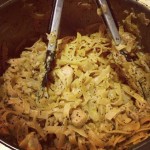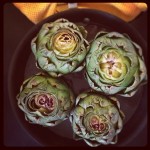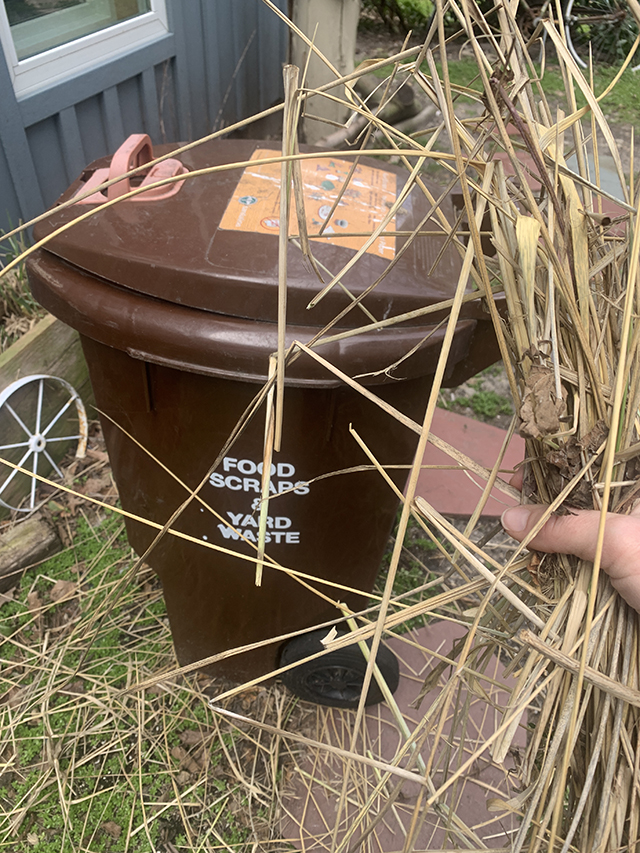
According to the NYC Department of Sanitation 31% of the waste collected in the city is organic.
Curbside composting which was on pause through the winter is back, effective immediately. Put your brown bins out curbside this week on the same day as recycling. You may also use any can/bin labeled “Composting Bin.”
Compost collection is available to all Rockaway residents – single family homes, small apartment buildings, and multi-unit residential buildings. No sign-up required.
As a refresher, below is a list of common (and not so common) materials that should be added to your compost bin.
From the kitchen: All fruit and vegetable scraps (remove stickers and rubber bands), meat, bones, rice, pasta, bread, cereal, grains, eggshells, coffee grinds, soiled paper products such as napkins, paper plates, teabags, coffee filters, cupcake holders, etc.
From the garden: leaves, grass clippings, garden trimmings, bark, plants, flowers, soil, house plants, and branches.
Weird stuff: Hair from your brush, cat or dog hair and food, used tissues (bodily fluids such as saliva, tears and mucus are compostable), failed jello sculptures.
And remember, these items should not be composted: diapers, personal hygiene products, animal waste, cat litter, food wrappers, non-paper packaging, and foam.

Pro-tip: Keep a compost bag or brown bag in your freezer. Once full with your kitchen scraps, bring it outside into your brown bin. Currently I have a butter village in my freezer (I’ll explain in a later column), so I came up with an alternative storage method just as simple. Clear out one crisper draw in your refrigerator. Line it with a compostable bag. The closed drawer keeps the food scraps contained until you’re ready to bring the bag outside. With these compost storage methods, there’s no worry of ants under the sink or other pests in the kitchen. There’s no excuse people!
The goal of the NYC Organics Program is to reduce waste in our landfills while creating clean energy and compost for our gardens and city parks. Think of all those delicious tomatoes! The success of the organics program is dependent on us. Pledge to protect our planet by taking part and reducing your personal footprint.
Source: www.grownyc.org, www.nyc.gov
by Paula D.
on March 25, 2023 3:01 pm in Food
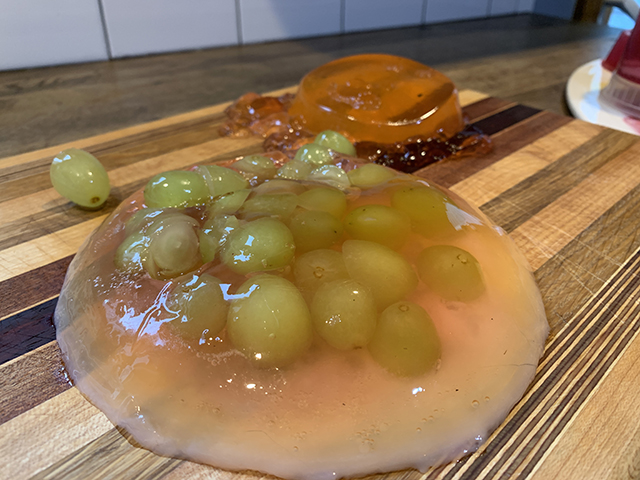
They call it molded meals. It’s a form of fruit salad. It can be savory or sweet. Some of the recipes include mayonnaise. Jello was a thing. A very fashionable, opulent food thing in the Victorian era. Jello had a mid-twentieth-century revival when the Jell-O company changed their advertisements from black and white, to color lithographs. Jello is color. Today, the only place I can think of that serves Jello is the hospital. And then there’s Bill Cosby. But to my delight, there are others like me. I found them on the internet. There is an underground jello sculpting community.
My interest in jello was triggered when I saw a vintage photo of a beautiful tower in “Better Homes and Gardens, New Cookbook, 1981.” Bold hues, structural shapes vs. organic forms, and the endless foods you can suspend within jello were so inspiring. I immediately saw jello as an art form. My mind was overwhelmed by possibilities – a jello longboard with a little jello person on it; an elaborate English jello garden; one large jello flower; a jello dolphin jumping out of blue jello water and a layered, pastel jello Easter egg with embedded fruit, were just some of my concepts.
Before I share my jello journey, I need to address gelatin. It’s gross and it’s not vegetarian. In light of this roadblock, my first step was to find an alternative. You can buy vegan jello online. It’s made of seaweed and plant starches. Get that and rest easy.
I thought about purchasing fancy, vintage molds on eBay. Instead, mainly in the interest of submitting my column somewhat on time, I used Tupperware. I completed the first layer and included strawberries. I was so excited! I yearned to continue but layered rainbow jello takes time to set. With this, I discovered jello challenged my patience.
Day by day, layer by layer, I realized something was amiss. It wasn’t getting hard. I posted about the jello problem on Instagram. A very wise man named Jimmy O’Brien responded with this, “I think the issue here is you have to cook the fruit first. Some fresh fruit doesn’t allow jello to set properly because it has proteases, which break down the proteins in jello. Cooking the fruit will break this enzyme down.” Many recipes in the New Cookbook used canned fruit. This aligned with Jimmy’s information. Also, I feel the vegan jello is a loose player in this game.
When I finally released my jello sculptures from the molds, I was overcome with grief.
I followed the book. I put the groundwork in place. Yet after all of my time, my passion, and my investment, I failed. Coping with failure is so hard (unlike my jello). It’s a hit to our ego. It makes a mess. It’s guilt. It’s all the time you feel you’ve wasted. It’s watching in slow motion, your shortcomings toppling over onto the open door of your dishwasher. And you saw it coming, but you couldn’t stop it from falling apart.
It’s starting over.
The next morning, lying in bed at 5 a.m. after a night of sleep, I ordered more vegan jello on my phone. Is it really a failure if you learn from it?

Next time I will use less water per packet. I feel higher density will help correct the problem.

Dear gardeners – we made it. Spring is upon us! I know you can feel it. The need to get your fingers in the soil. The want of the sun on your back. And the warm breeze on your skin, that carries the fragrance of spring.

Gardens at Wave Hill
This is our busiest time of year – pruning, clearing organics, and seeds, sourcing compost, and I’d argue the best part, planning out our gardens for the season.
Last summer I visited Wave Hill with my friend Winnie – a stunning, 28-acre space in the Bronx where gardens live within gardens above the Hudson River.
There, we came across a border garden along a walk. The concept: edible landscaping. The idea hit both Winnie and me as brilliant. We felt inspired. It pushes the creative boundaries of gardening; challenges gardening norms and centers on sustainability and ecology. Below I elaborate on edible landscaping and other interesting garden themes to consider this season!
Edible Landscaping: By definition, edible landscaping is the use of food plants as design features in a landscape. These plants are used both for aesthetic value as well as consumption. The veg plants are intermixed with beneficial non-edibles such as citronella grass, marigolds, chrysanthemums, and petunias. These companion plants keep pests away while attracting beneficial insects. Together, gorgeous colorful foodscapes, garden borders, and patches are created. Each year you redesign your edible landscaping with different vegetables and arrangements – so fun! Ditch the lawn, (please, please) and build out an eco-edible landscape this year.
Tea Garden: A themed tea garden is perfect for a small patch, a balcony, or a window sill with south-facing light. Plant chamomile, peppermint, lavender, lemon balm, and red clover to name a few. Lots of light and well-drained soil will do the trick. Use these herbs to create your own unique blends. At the end of the season, dry and store the herbs for an abundance of tea through the winter months.
Herb Garden: Also great for small spaces or a container garden, the textural varieties will look beautiful intermixed. Herb plants are valuable to bees, other insects, and your Sunday sauce. One of the joys for me in midsummer is popping out the back kitchen door, choosing my fresh herbs, and starting up a meal. Personalize your herb garden to your food likes or grow a medicinal herb patch.
Culture Garden: Create a garden centered around your ethnicity or a culture you embrace. Create this garden in honor of a friend or a loved one. The bounty of this garden will give you and your family everything needed to cook delicious, Latin food, Italian food, Indian, Mediterranean, Middle Eastern, and Polish cuisine – you choose. The foods of this garden will provide an endless variety of meals, under the umbrella of one chosen, the beloved country.
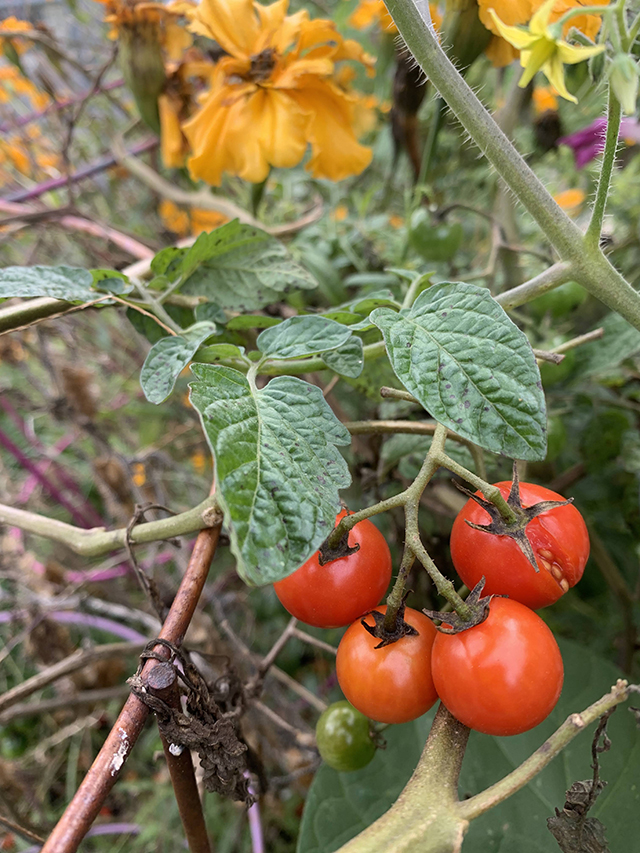
by Paula D.
on March 10, 2023 12:00 pm in Instagram

The home stretch of winter seems like a silly time to write about ice cream but here we are. I was never that into ice cream, not even as a kid. But people change. I’m an ice cream person now. I’ll save my ice cream story for a future, 5-part column. Better yet, it will be included in my tell-all memoir, of which Katie Honan will edit, but she doesn’t know it yet.
Over the summer I’d go to Mara’s Ice Cream Parlor a few times a week with my friend Teresa. We’d eat ice cream for dinner and lament about the Cookie Monster flavor shortage. During the holidays I got my fix at all the parties.
A few weeks ago I spotted cute, colorful, instagram-able ice cream cones in Key Food. I was leaning over my cart, debating… then clarity. F it. It’s cold out, but that doesn’t mean I can’t enjoy ice cream. The prospect of making my own ice cream cones with all the toppings, in the comfort of my own kitchen, hit like a warm rush of rainbow sprinkles washing over my serotonin receptors.

Next stop: The Museum of Ice Cream. Have you heard of it? Things weren’t adding up as my journey through 13 different “exhibits” progressed. Finally after the floating banana experience there was some history and artifacts on ice cream. These are fun:
-
1774 America’s first ice cream shop opened, located on Dock St. (now Pearl Street NYC).
-
1790 – George Washington first consumes ice cream.
-
1881 – The Sunday was born. Vanilla ice cream drizzled with different syrups, garnishes, and toppings is sold only on Sundays.
-
1929 – Willam Dreyer develops Rocky Road Ice cream as a metaphor, for the stock market crash.
Googling on the A train home, I learned The Museum of Ice Cream is not a museum. It’s a wannabe influencer’s instagram dream come true. That’s why I loved it so much! And you can eat ice cream throughout the whole experience. So there’s that too.
The interactive, multi-sensory “art” exhibit and adult pleasure playground was conceived in 2016 by then 24-year-old co-founder, Maryellis Bunn. Bunn is a California native and Parsons graduate. A quote in NYMag explains… a lot:
“Bunn found the city’s existing institutions disappointing: They hadn’t adapted to larger cultural currents, leaving little that would “engage and capture” her demographic.”
The Museum of Ice Cream started as a pop-up. It was self-funded by Bunn and co-founder Manish Vora (former CEO of Lightbox,). Thirty thousand tickets at $18 each sold out in under a week. Boom, you’re rich.
The selfie museum concept is disturbing and undeniably brilliant. If you like ice cream and the color pink, it’s a must on your culture calendar. It’s a fun, indoor winter activity for the whole family or the charismatic narcissistic.
Check out my fake influencer account – @theglorifiedtomato.






























